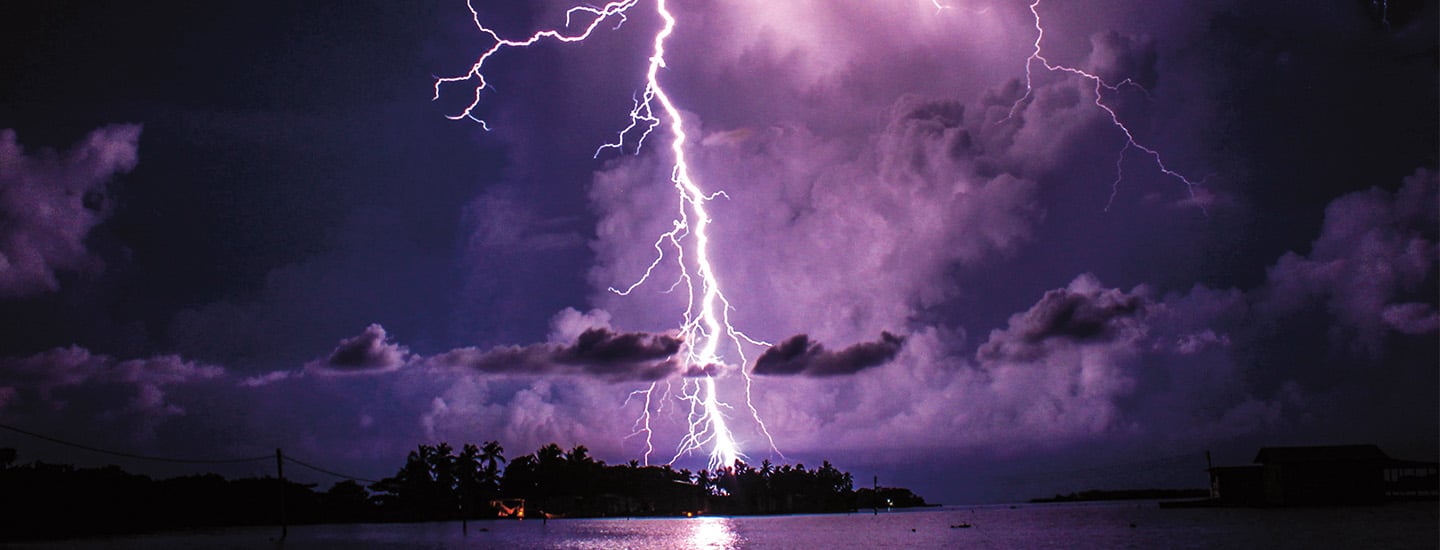Shutterstock.com
Kids in Ologa, Venezuela, boat through their village. The houses sit on stilts.
Fiery bolts of light race across the night sky, illuminating the lake below. They streak in jagged paths, one after another, for hours on end.
This epic storm, known as Catatumbo lightning, isn’t just a one-time occurrence. Tens of thousands of bolts strike nightly above Venezuela’s Lake Maracaibo for about eight months a year. You can count up to 200 flashes per minute, with five or more sometimes happening at once!
The cause of this extreme electrical activity is still being studied, but most experts agree that it has to do with geography. Lake Maracaibo is surrounded by mountains on three sides and water on the fourth. When cool winds flowing over the mountains collide with humid air sweeping in from the Caribbean Sea, storms erupt. The phenomenon is named for the Catatumbo River, which enters the lake where the storms are most intense.
Ologa, a rural fishing village, is closest to the activity. People there take the lightning in stride. Most of the action takes place about 3 miles up, so strikes to ground level are relatively rare. Unless people are directly below the storm’s center, they don’t even hear thunder. (That sound carries only about 10 miles.)
Still, residents stay off the water during storm hours. And if lightning does hit their homes’ tin roofs, the wooden floors help protect them from shocks.

